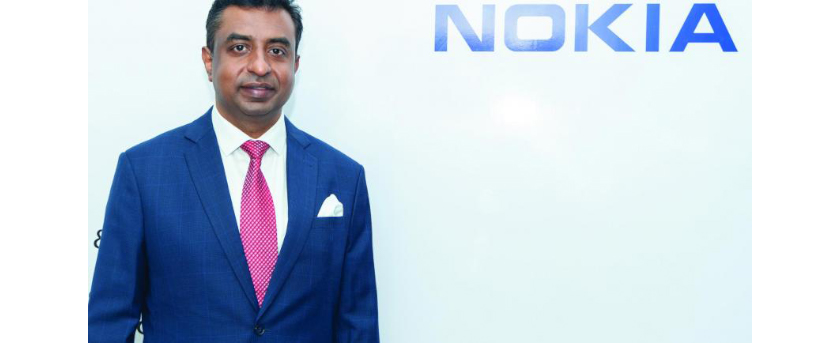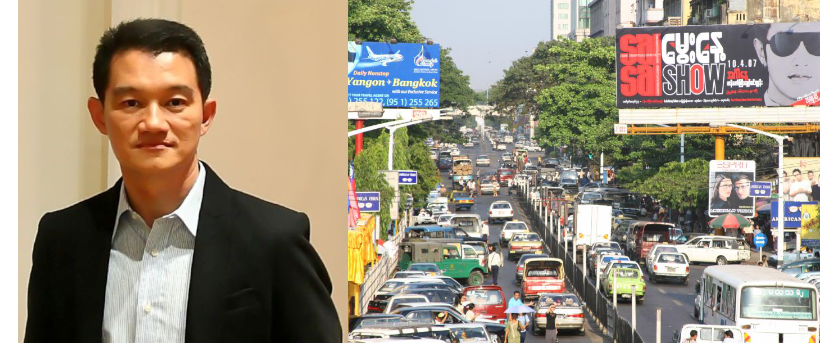
Myanmar News Updated
Highlight Myanmar News

Interview: Nokia’s CSO to Myanmar Discusses 5G
![]() 12/03/2019
12/03/2019
Telecommunication technology has advanced from 3G to 4G, and now 5G is making a lot of waves in the sector. Experts believe that the world is shifting to 5G. At this exciting time in technology advancement, an interesting question to ask is: Can Myanmar, which just joined the “mobile dance” in 2014, successfully transition to 5G along with everyone else?”
Myanmar Business Today met with Mr. Danabalan Amirthalinga, Nokia’s Country Senior Officer (CSO) to Myanmar, to talk about the future of country’s technology and Nokia’s presence in the country.
MBT: Could you please tell me about Nokia’s projects in Myanmar?
DA: We built 3G and 4G networks for our telecom customer Ooredoo, which we started in 2014. In addition to that, we will provide technological services to other operators such as MPT and Telenor to help them become successful operators in the telecom business. As far as long-term commitments go, Nokia is actively participating at the front of the pack in technological advancements including the evolution of 2G, 3G, 4G, and finally 5G services.
MBT: What do you think of the potential for 5G in this country?
DA: Myanmar has a lot of potential for 5G networks — economically in particular. We worked with Ooredoo on 3G, and started building the 4G network for Ooredoo as well, fulfilling the needs of the end user. At the time we build 4G network, consumers ability in Myanmar to make use of the network was higher than of neighboring countries. Myanmar will need infrastructure for 5G, as it is going to come into existence in 2020. Nokia has full capacity to build infrastructure for 5G networks. As 5G is an evolution of 4G, and since there are higher number of 4G users, we see great potential and expectations. Nokia wants to inform the people in Myanmar on what is 5G. That is why we built the technological center on 5G technology at Yangon Technological University. We want to make the 5G technology familiar to people through youngsters and technological students. This is Nokia’s first step. Myanmar has bright future regarding to 5G technology.
MBT: Can you tell me more about that technological center?
DA: We wanted to help develop the country’s technological sector and foster technological professionals through our experience. We wanted to build technology center for students. In early 2018, we discuss about our wish with Ooredoo and worked together to build the center with the hope of training students. They can get good experiences from us — Ooredoo and advanced technologies from Nokia. We built this center to make students in Myanmar to become skillful professionals in telecom industry. The center charges no fees.
MBT: Our government once said that Myanmar is lacking in terms of infrastructure and technology, and in need of regulatory changes. Do you think it is possible for Myanmar to use 5G in Myanmar with the rest of the world?
DA: It is true that Myanmar needs to change regulations on telecommunication such as frequency. So, can Myanmar use 5G technology by 2020? Sure, it can! Why not? Myanmar indeed was able to use 3G when neighboring countries used it. Whey they used 4G, Myanmar did too. We can’t say Myanmar will be left behind in terms of technology. The U.S., Europe, and Japan are using 5G already. By 2020, the whole world will start using 5G and Myanmar will surely be able to use.
MBT: What is the different between 4G and 5G?
DA: The significant change is latency. Latency is time you need to wait for the data when you look for something on search engine. 5G’s latency is much faster than 4G’s. Next advantages is that command will go from to machine to machine. What I mean is that, right now we command machines manually (human to machine), like turning up a thermostat on a refrigerator. When it comes to 5G technology, the command goes to from machine to machine. For example, we will be able to control our aircon, TV, fridge and washing machine using a smartphone. This is just some of the obvious advantages. There are also many other significant advantages.
MBT: Will 5G network reduce or increase cost for users?
DA: We just build the network. The charges are decided by operators. So, I don’t want to give opinion on that.
MBT: Companies are preparing to provide 5G technology. Huawei recently organized a 5G Forum in Naypyidaw. So, how has Nokia prepared for the race among strong competition?
DA: Nokia focuses on what it is doing and what we do best. Nokia is one of the companies that provides 5G technology from the beginning to the end. Creating a successful 5G network depends on how well-executed it is from the beginning to end. This includes the network, transmission, radio waves and ecosystem. 5G technology cannot stand by itself alone. So, Nokia focuses on creating the perfect ecosystem as it reduces cost. If operators use Nokia’s end-to-end system, it will lower the cost to 30-40 percent compared to other 5G providers.
MBT: Could you tell me about Nokia’s handsets?
DA: In recent years, we granted a license to HMD for handsets production. [Ed. HDM is an independent Finnish company established in 2017] So, HMD now takes responsibility for production of and distribution of our products. Nokia is closely working with HMD providing technological assistance in handset production. This allows Nokia to focus on building networks and upgrading the technology for cellular phones.
Related News
-

5 Key Potential Investment Sectors for Thai Investors
Author : Nattawin Phongsphetrarat, vice president of Thai Business Association of Myanmar (TBAM). " One of the very famous questions that has always been asked by the Thai investors for Myanmar is what the high potential business sectors are for Thai business. " There are many sectors that have high potential but TBAM committees have analyzed that these 5 sectors are the key potential
Read More 08/04/2019
08/04/2019 -

Interview: Nokia’s CSO to Myanmar Discusses 5G
AUTHOR: SWE LEI MON Telecommunication technology has advanced from 3G to 4G, and now 5G is making a lot of waves in the sector. Experts believe that the world is shifting to 5G. At this exciting time in technology advancement, an interesting question to ask is: Can Myanmar, which just joined the “mobile dance” in 2014, successfully transition to 5G along with everyone else?”
Read More 12/03/2019
12/03/2019
